Do you have a question about the ALLEN & HEATH iLIVE and is the answer not in the manual?
Details firmware version and updates for the iLive system.
Explains the guide's scope and intent for new iLive users.
Points to additional help, user guides, and downloads.
General safety guidelines for operating iLive equipment.
Outlines the terms of use for the iLive software.
Covers equipment handling, environment, and maintenance advice.
Illustrates the core MixRack and Surface connection using ACE.
Describes adding more control devices like PL Series or laptops.
Explains digital mic splits for FOH and monitor setups.
Details controlling iLive via laptop or iPad without a physical surface.
Explains linking two MixRacks for up to 128 input channels.
Describes the fixed format iLive as an evolution of the modular range.
Details the iDR MixRack series: 64, 48, 32, 16 models.
Describes iLive T and R Series surfaces: T112, T80, R72.
Explains assignable remote control devices for iLive.
Details controls for preamp, HPF, gate, PEQ, compressor.
Explains the main touchscreen and its navigation.
Describes fader banks, layers, and strip functions like SEL/MIX.
Lists physical I/O and network ports on the T Series surface.
Details fader strips, processing access, and mix functions.
Explains touchscreen functions and shortcut keys.
Lists rear panel I/O, power, and network ports.
How to link the MixRack and Surface using a single CAT5 cable.
Setting up IP addresses for MixRack, Surface, and network devices.
Connecting for iLive Editor software and using Wi-Fi control apps.
Correct order for powering MixRack and Surface on.
Expected startup duration for MixRack, Surface, and TouchScreen.
Interpreting system status LEDs and onscreen messages.
Selecting and loading pre-configured shows for starting points.
Loading Scenes for MixRack and Surface after recalling a show.
Creating and storing custom configurations as User Shows.
Explains the functions of SEL, MIX, PAFL, and MUTE keys.
Understanding information and status shown on strip LCDs.
Using the touchscreen for deeper control and parameter access.
Configuring solo, AFL, and monitor output behaviour.
Customising fader banks, dB display, and screen settings.
Using display shortcuts and locking channels in view.
Accessing naming and colouring via the channel strip.
Using the touchscreen to assign names and colours to channels.
Different ways to select channels for editing and assignment.
Storing and applying frequently used channel names.
Using the SEL key to open processing blocks for adjustment.
Configuring gain, pad, polarity, and trim for inputs.
Managing stereo mode, width, and polarity for stereo channels.
Using faders to control GEQ frequency bands.
Understanding fader mapping and adjustments for GEQ.
Managing sends from multiple channels to a single master output.
Sending a channel's signal to multiple master outputs.
Advanced routing and assignment options for channels and buses.
Patching FX units directly into channel or master signal paths.
Using mix buses for FX sends and returns.
Setting delay times using the tap tempo feature.
Introduction to Dynamic EQ and Multiband Compressor.
Controlling specific frequency bands independently for compression.
Adaptive gain control based on signal level for frequency bands.
Grouping channels for simultaneous control via DCA masters.
Utilizing DCAs for mute group functionality.
Mapping DCA mute masters to soft keys for quick access.
Linking parameters between channels or masters for consistent settings.
Efficiently copying and resetting channel and processing settings.
Assigning physical inputs to specific iLive channels.
Assigning channels/mixes to physical outputs.
Using sockets for external processing inserts.
Reassigning channels and masters to different strip positions.
Modifying the console's mix architecture (Groups, Auxes, FX, Matrix).
How iLive settings are retained when powered off.
Setting up multiple users with restricted access levels.
Storing and recalling processing parameters as libraries.
Saving and loading snapshots of live mixing parameters.
Selecting specific parameters to be included in a Scene.
Organizing and manipulating the list of saved Scenes.
Protecting parameters from being overwritten during Scene recall.
Configuring system-wide iLive settings and boot behaviour.
Saving and loading entire system configurations as Shows.
Importing and exporting Scenes to/from a USB drive.
IP addressing for master/slave MixRacks.
Methods for cabling and linking MixRacks.
Software configuration for dual MixRack operation.
Illustrates a dual-engineer setup with MixRacks and Surfaces.
Instructions for fitting rack ears in different mounting configurations.
Details for angled rack ear positions for a lower profile.
Describes bus assignments, channels, and fader layout for the FOH-LRSub template.
Details bus assignments, channels, and fader layout for monitor mixing.
Provides physical size and mass for iLive components.
Lists inputs, outputs, controls, processing, and system features.
Summarizes the iLive architecture and operating philosophy.
Outlines the terms and limitations of the one-year manufacturer's warranty.
Details firmware version and updates for the iLive system.
Explains the guide's scope and intent for new iLive users.
Points to additional help, user guides, and downloads.
General safety guidelines for operating iLive equipment.
Outlines the terms of use for the iLive software.
Covers equipment handling, environment, and maintenance advice.
Illustrates the core MixRack and Surface connection using ACE.
Describes adding more control devices like PL Series or laptops.
Explains digital mic splits for FOH and monitor setups.
Details controlling iLive via laptop or iPad without a physical surface.
Explains linking two MixRacks for up to 128 input channels.
Describes the fixed format iLive as an evolution of the modular range.
Details the iDR MixRack series: 64, 48, 32, 16 models.
Describes iLive T and R Series surfaces: T112, T80, R72.
Explains assignable remote control devices for iLive.
Details controls for preamp, HPF, gate, PEQ, compressor.
Explains the main touchscreen and its navigation.
Describes fader banks, layers, and strip functions like SEL/MIX.
Lists physical I/O and network ports on the T Series surface.
Details fader strips, processing access, and mix functions.
Explains touchscreen functions and shortcut keys.
Lists rear panel I/O, power, and network ports.
How to link the MixRack and Surface using a single CAT5 cable.
Setting up IP addresses for MixRack, Surface, and network devices.
Connecting for iLive Editor software and using Wi-Fi control apps.
Correct order for powering MixRack and Surface on.
Expected startup duration for MixRack, Surface, and TouchScreen.
Interpreting system status LEDs and onscreen messages.
Selecting and loading pre-configured shows for starting points.
Loading Scenes for MixRack and Surface after recalling a show.
Creating and storing custom configurations as User Shows.
Explains the functions of SEL, MIX, PAFL, and MUTE keys.
Understanding information and status shown on strip LCDs.
Using the touchscreen for deeper control and parameter access.
Configuring solo, AFL, and monitor output behaviour.
Customising fader banks, dB display, and screen settings.
Using display shortcuts and locking channels in view.
Accessing naming and colouring via the channel strip.
Using the touchscreen to assign names and colours to channels.
Different ways to select channels for editing and assignment.
Storing and applying frequently used channel names.
Using the SEL key to open processing blocks for adjustment.
Configuring gain, pad, polarity, and trim for inputs.
Managing stereo mode, width, and polarity for stereo channels.
Using faders to control GEQ frequency bands.
Understanding fader mapping and adjustments for GEQ.
Managing sends from multiple channels to a single master output.
Sending a channel's signal to multiple master outputs.
Advanced routing and assignment options for channels and buses.
Patching FX units directly into channel or master signal paths.
Using mix buses for FX sends and returns.
Setting delay times using the tap tempo feature.
Introduction to Dynamic EQ and Multiband Compressor.
Controlling specific frequency bands independently for compression.
Adaptive gain control based on signal level for frequency bands.
Grouping channels for simultaneous control via DCA masters.
Utilizing DCAs for mute group functionality.
Mapping DCA mute masters to soft keys for quick access.
Linking parameters between channels or masters for consistent settings.
Efficiently copying and resetting channel and processing settings.
Assigning physical inputs to specific iLive channels.
Assigning channels/mixes to physical outputs.
Using sockets for external processing inserts.
Reassigning channels and masters to different strip positions.
Modifying the console's mix architecture (Groups, Auxes, FX, Matrix).
How iLive settings are retained when powered off.
Setting up multiple users with restricted access levels.
Storing and recalling processing parameters as libraries.
Saving and loading snapshots of live mixing parameters.
Selecting specific parameters to be included in a Scene.
Organizing and manipulating the list of saved Scenes.
Protecting parameters from being overwritten during Scene recall.
Configuring system-wide iLive settings and boot behaviour.
Saving and loading entire system configurations as Shows.
Importing and exporting Scenes to/from a USB drive.
IP addressing for master/slave MixRacks.
Methods for cabling and linking MixRacks.
Software configuration for dual MixRack operation.
Illustrates a dual-engineer setup with MixRacks and Surfaces.
Instructions for fitting rack ears in different mounting configurations.
Details for angled rack ear positions for a lower profile.
Describes bus assignments, channels, and fader layout for the FOH-LRSub template.
Details bus assignments, channels, and fader layout for monitor mixing.
Provides physical size and mass for iLive components.
Lists inputs, outputs, controls, processing, and system features.
Summarizes the iLive architecture and operating philosophy.
Outlines the terms and limitations of the one-year manufacturer's warranty.
| Type | Digital Mixer |
|---|---|
| Rack Options | MixRack is rack-mountable |
| Remote Control | Via network using iLive Editor software |
| Connectivity | Ethernet, MADI |
| Processing | DSP |
| Sampling Rate | 96kHz |
| EQ | 4-band parametric |
| Dynamics | Compressor, gate |
| Mix Rack | Yes |
| Word Clock | Yes |
| Dimensions | Varies by component |
| Weight | Varies by component |
| Effects | Multi-effects processor |
| Power Supply | Internal redundant power supply (MixRack) |
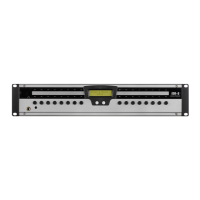
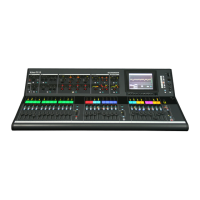

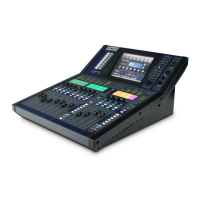

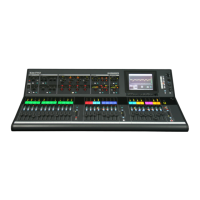
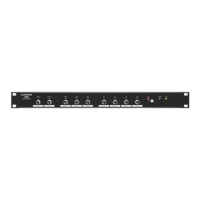
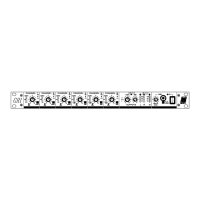
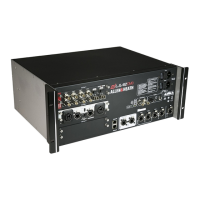
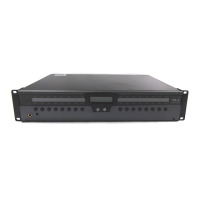


